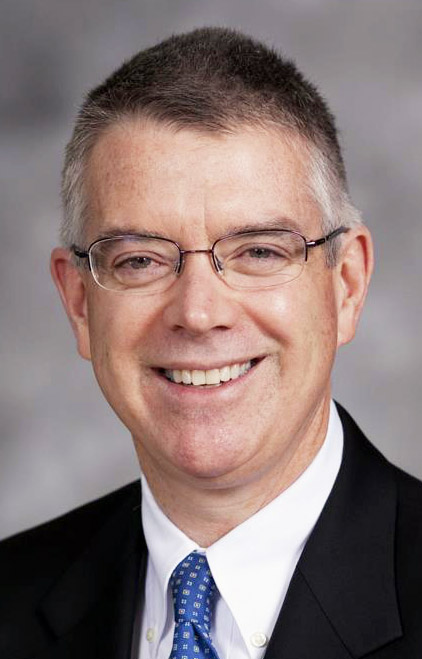By Dr. Tim Millea
Catholic Health Care Today

In mid-February, in the midst of many other contentious debates in our country, a new issue caught the nation by surprise. The 8-1 decision by the Alabama Supreme Court that frozen embryos are to be considered persons became a prominent headline. The Supreme Court’s near-unanimous verdict resulted from a case brought by three couples whose frozen embryos were accidentally destroyed in a Mobile clinic. The Alabama Supreme Court agreed with the plaintiffs, stating that the embryos were “extrauterine children” and wrongful deaths had occurred. Justice Jay Mitchell, writing for the majority, noted that Alabama state law “applies to all unborn children … regardless of their location.”
Currently, approximately 2% of American births result from IVF (in vitro fertilization) or other assisted reproductive technology (ART) methods, accounting for nearly 100,000 per year. Since the first IVF baby born in the United States in 1981, an estimated 8 million babies have been born using these methods. The objection, from the Catholic view, is not about the value of these individuals’ lives but the means by which they were created.
In a typical IVF procedure, multiple oocytes (eggs) are retrieved from the woman. Of those, most will be deemed “acceptable.” The next phase involves fertilization of the eggs, with successfully produced embryos in more than half of them. These embryos will be allowed to develop for several days before freezing, known as cryopreservation. The older the woman, the more eggs needed. In a 2020 article, researchers at Extend Fertility Center in New York recommended that women under 35 years old should freeze at least nine embryos. At the other end of the age range, a woman over 42 years old should freeze an astounding 80 embryos.
The fertility industry has evolved into a global market with nearly $26 billion in revenue annually. In the United States, according to the National Embryo Donation Center, this has resulted in approximately 1 million frozen embryos. That is at the center of the argument surrounding IVF.
From a societal view, IVF has been normalized. However, long before the first successful IVF births, the Catholic Church raised a red flag about the harms such technology would bring. In Pope Paul VI’s 1968 encyclical, “Humanae Vitae,” we are called “not to betray … personal responsibilities by putting faith in technical expedients.” Even then, the Church predicted, “It is to be anticipated that perhaps not everyone will easily accept this particular teaching.”
The first of two points of contention is the means of production of new life. Rather than procreation resulting from the natural act of a married couple, IVF and other forms of ART use methods of technical production in a laboratory setting. Each embryo becomes both a commodity and a potential victim. With the advent of genetic testing of embryos, those with evidence of “unacceptable” traits may be destroyed. This has led to more selective destruction of embryos.
Embryos that are frozen can later be thawed for implantation, although evidence is increasing that longer durations of cryopreservation harm the child. In 2023, Danish and Swedish physicians reviewed a litany of data linked to these methods, with increased rates of preterm birth, low birth weight and birth defects. Concerns also have been raised about long-term problems in these children, such as emerging indications of difficulties with blood pressure stability and cardiovascular function.
The second point of contention pertains to the dignity of the cryopreserved embryo. In pro-life efforts today, the foundational position maintains that life begins at conception. With IVF, the fact that conception begins in a petri dish does not lessen the fact that the fertilized egg is a person, deserving of protection, respect and dignity. What happens to the enormous number of unborn humans placed in frozen orphanages, sometimes for years? They may be adopted by another couple, thawed and implanted. They may be sold for research, where they are thawed, allowed to grow further and then sacrificed for study. Sadly, the couple may discontinue paying storage fees, which is a death sentence of disposal.
Given the joy of having children, the teaching of our Church about IVF may prompt an echo of the apostles’ reaction to one of Jesus’ commands: “This saying is hard; who can accept it?” It is important to recognize that the Church’s opposition is to the means of creating life and not at all to the life created. The children of ART have dignity and value fully equal to any other person. A couple’s desire for a child is a strong and fully natural impulse, yet this good intention does not justify the unnatural procedures used to fulfill that desire.
Two points seem clear. First, the Catholic magisterium has continued its study of the science and ethics of IVF and related methods and has maintained its conviction over the years. Second, the Church may seem nearly alone in that conviction, which has been a common factor in its long history, with positions based on faith and reason rather than cultural expediency and pressure. We are well-served to recall the words of St. John Paul II in his 1987 encyclical, “Donum Vitae,” emphasizing that every child is a “…a living gift of the divine Goodness. …”
(Dr. Tim Millea is president of the St. Thomas Aquinas Medical Guild and a member of St. Paul the Apostle Parish in Davenport.)











